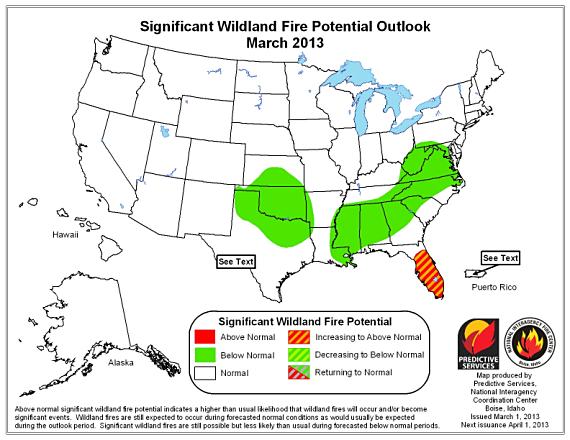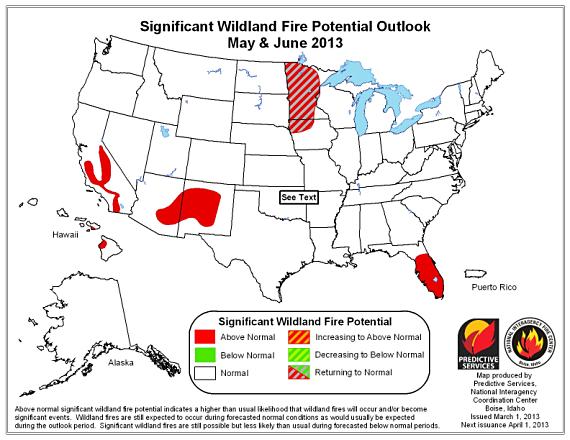The map above is an attempt by the U.S. Forest Service to quantify by location the potential, this year, of wildfires that that would be difficult for suppression resources to contain. Areas with higher values have a higher probability of experiencing high-intensity fire with torching, crowning, and other forms of extreme fire behavior.
A much larger zoomable version of the map can be found here (1.5MB). (It becomes more interesting when you click to zoom in to see more detail.)
At their web site, the USFS does not describe in detail the criteria for developing the map but it appears to be primarily past fire occurrence, estimates of wildfire likelihood and intensity, vegetation, and probably topography. Recent weather, most likely not so much.
Below is an excerpt about the map from their web site:
****
“Using the FPA FSim products as inputs, as well as spatial data for vegetation and fuels characteristics from LANDFIREand point locations of fire occurrence from FPA (ca. 1992 – 2010), we used a logical series of geospatial processing steps to produce an index of WFP for all of CONUS at 270m resolution. The final WFP map is presented here in two forms: 1) continuous integer values, and 2) classified into five WFP classes of very low, low, moderate, high, and very high. We don’t intend for the WFP map to take the place of any of the FSim products; rather, we hope that it provides a useful addition to the information available to managers, policy makers, and scientists interested in wildland fire risk analysis in the United States. On its own, WFP does not provide an explicit map of wildfire threat or risk, because no information on the effects of wildfire on specific values such as habitats, structures or infrastructure is incorporated in its development. However, the WFP map could be used to create value-specific risk maps when paired with spatial data depicting highly valued resources (Thompson et al. 2011a, Thompson et al. 2011b).”



















